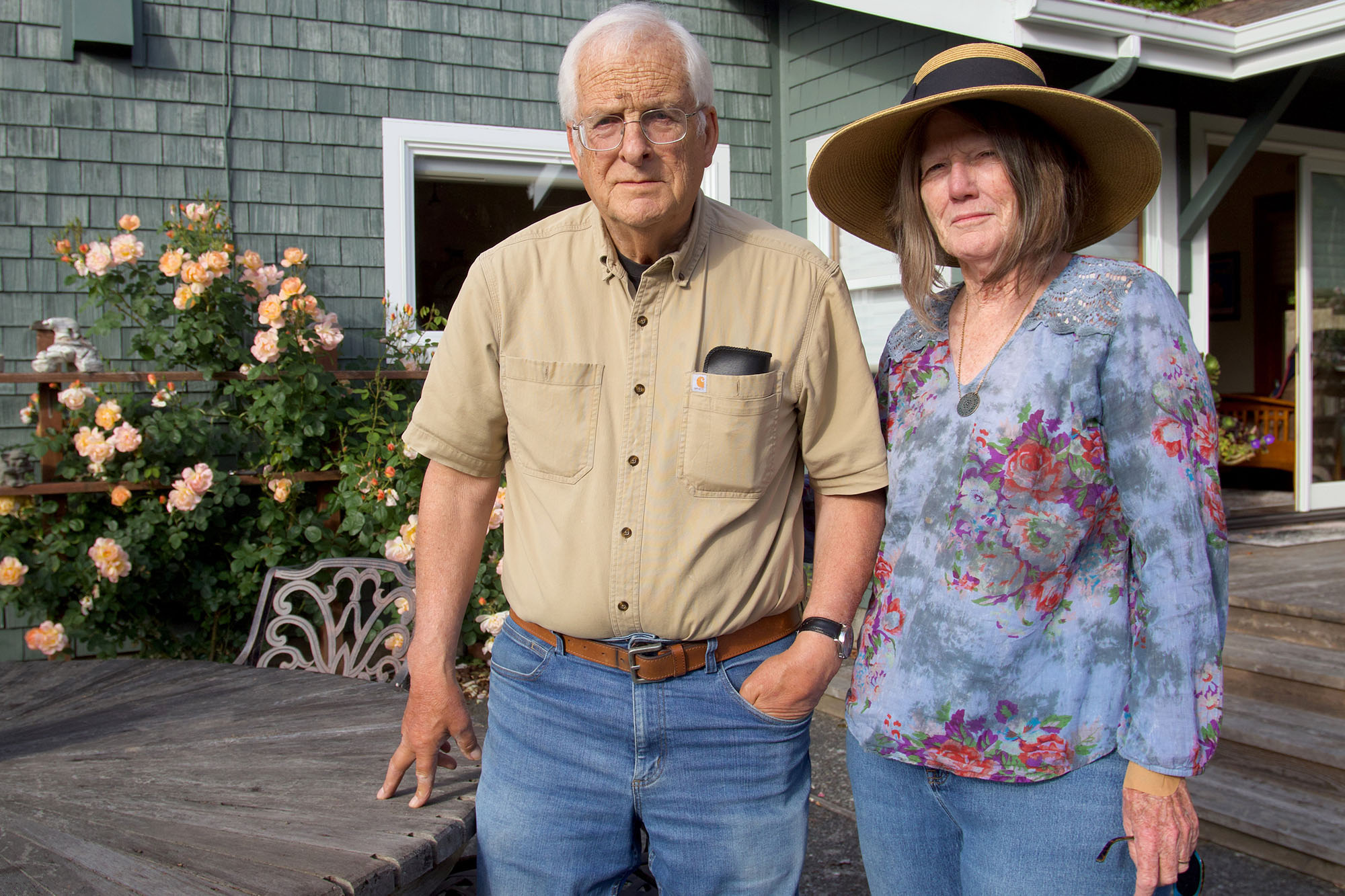
James McLean, MD, had been retired from emergency medicine for 11 years when he began considering a part-time opportunity that would allow him to tackle one of his longtime frustrations as a physician. “During my career in ER medicine, I was constantly treating disadvantaged patients who could not afford the expensive emergency room bills,” said McLean, 71, who retired from the Kaiser Permanente Oakland Medical Center in 2008. “I wanted to provide these services at a much lower cost in a community clinic urgent care setting.”
While he had enjoyed traveling the globe during retirement, his plans changed after a friend introduced him to the medical director of Encore Physicians, a program that matches retired doctors with health clinics in need of providers. McLean decided it was time to leverage his medical expertise in a new way. Encore alerted him to an urgent care role at La Clínica Monument in Concord, California, a Federally Qualified Health Center (FQHC) in Contra Costa County that serves about 24,000 patients a year. In October 2019, he started working at the clinic two days a week, and his experience, skill, and deep knowledge of medical care quickly became an asset to the organization.
Two programs in California are generating opportunities for senior physicians to refresh and renew their medical practices, and the benefits are flowing to the doctors and safety-net organizations. Clinics benefit from the experience of the physicians, and other providers at those clinics can tap into the wisdom gained by these doctors’ decades of experience.
Deep Experience
“As an FQHC, the providers we hire are usually fresh out of training and have a lot of questions,” said Chika Akera, MD, a regional director for La Clínica. “It’s really nice to have an experienced physician who is willing to listen and weigh in when they want input on a case.”
Akera struggles to recruit and retain physician assistants, nurse practitioners, and doctors, all of whom can find higher-paying jobs elsewhere. Two physicians had resigned just before McLean joined the team of 14 providers. “We love the fact that he can offer urgent care because primary care providers are often overbooked and may not be able to squeeze in another patient for weeks,” Akera said. “Dr. McLean allows us to provide access and quality care to our patients who need an appointment sooner and shouldn’t wait.”

Since launching in 2019, Encore Physicians has placed 15 doctors in Bay Area community clinics, including primary care doctors and specialists in cardiology, general surgery, ob/gyn, orthopedics, and podiatry. By helping more retirees continue to provide medical care, program director Michael Rizzo, MD, hopes to increase access to care for some of the 11 million Californians who live in primary care health professional shortage areas. “The main challenge is finding enough physician recruits to meet the needs in community clinics,” said Rizzo, a radiologist. “I believe there is a large pool of doctors who would be open to this type of work, but we do not have an easy avenue to let them know about the opportunity.”
Most of the doctors placed thus far learned about the program through the Kaiser Retired Physicians Association. In 2016, Kaiser Permanente partnered with a regional consortium of community clinics to explore the possibility of tapping into the resource of retired doctors as a strategy to increase the number of providers in medically underserved areas. It was clear from surveys that clinics and retirees were interested in working together, but physicians were unsure how to navigate the path into a new role. Kaiser reached out to Encore because the organization was leading a program that placed retired business executives in part-time roles at community-based nonprofit organizations.
More Complicated for Physicians
But there were new complexities with retired doctors, including the credentialing process required to work at a new facility. While the Encore business executives each received a $25,000 annual stipend, physicians needed to be payroll employees in order to participate in the clinic’s malpractice insurance coverage. The community health centers wanted retired physicians to earn about the same hourly rate as other clinic physicians, and the doctors could work 4 to 16 hours a week. Kaiser continues to partner with Encore Physicians by providing financial support for program development and operations and by participating on the steering committee.
So far, the program has focused on placing doctors in Bay Area clinics, but community health centers and physicians from Colorado, Nevada, and Los Angeles have expressed interest in developing the program in these places. Although safety-net health centers always need primary care physicians, they also benefit from the expertise of specialists, said Rizzo. McLean’s surgical training and background enables him to perform invasive procedures, such as removing cysts or abscesses and aspirating fluid from joints.
“This really serves the patients because one-third of them do not have insurance, so they would be charged out-of-pocket if they had to go elsewhere for a procedure,” said Chrissy Milhomem, a La Clínica physician assistant who recently completed her training. When patients come to her with chest pain, she sometimes consults McLean for a second opinion. “He will help me interpret the EKG and determine if the problem is indeed cardiac-related and whether the patient needs to go to the emergency room,” she said.
Navigating the Electronic Health Record
McLean’s colleagues say that he, too, is eager to learn. After decades of using paper charts, learning an electronic health record (EHR) system took time. His La Clínica coworkers have helped him navigate the EHR and learn where uninsured patients can be referred for imaging, physical therapy, and other specialty services.
Similar to McLean, Arthur Bakal, MD, who recently retired from internal medicine at Kaiser Permanente, started working part-time at a community clinic after Encore Physicians connected him with LifeLong Medical Care, an FQHC in East Oakland. He initially saw patients in the office, but during the pandemic he transitioned to telehealth through LifeLong’s San Pablo clinic to reduce the risk of contracting COVID-19. Bakal, who works two half-days per week, meets with patients who are suffering from such problems as sprained ankles, back pain, eye infections, or COVID. While reviewing charts, he often identifies other routine care that is needed, including cancer screenings, labs for diabetes monitoring, or vision checks.
“I look forward to this work each week,” said Bakal, 68, who uses an interpreter to communicate with patients, most of whom speak Spanish. “It’s not too stressful, and I like being able to help out.”
Training to Work in Primary Care

Michael LaRocque, MD, was also ready to retire after decades of managing his own private urology practice, but he found a different path to reviving his medical practice. By 2007, the field had become difficult for LaRocque to reconcile available insurance reimbursements with rising overhead costs, so he retired. For several years he enjoyed the newfound freedom to travel, ski, sail, and hike, but it turned out that he missed interacting with patients.
LaRocque, 76, was interested in working with underserved populations, and his wife noticed a newspaper article about the Physician Retraining & Reentry program (PRR) offered through the University of California, San Diego. The program provided 15 online training modules in a variety of specialties involved in primary care, including cardiology, dermatology, and orthopedics.
PRR was founded in 2014 by a surgeon who recognized that physicians had left the field to care for children or aging parents, because they were burned out or experiencing health issues, or were eager to return to practice in a new role. More than 150 physicians nationwide have completed the program, including a microvascular surgeon who lost her vision in one eye after Lasik surgery, a surgeon who suffered a stroke, and an oncologist who was injured in a bicycle accident. “Getting doctors to extend their careers is the best way to deal with the physician shortage,” said Thomas DeRosa, the chief executive officer of PRR.
Broader Range of Clinical Practice
After completing the training in nine months, LaRocque reached out to the Vista Community Clinic, an FQHC that serves a largely Latinx population in northern San Diego County. Clinic managers were eager to enlist his help, and LaRocque seized the opportunity to see patients without the extra responsibility of managing a practice. Although he enjoys using his previous experience to assess urological problems, he is grateful to be equipped to treat patients for a much broader array of medical issues.
“I know my patients are not only struggling to understand their health problems, but many are also facing incredible stress from financial difficulties, language barriers, and sometimes the inability to read and write in their native language,” he said. “I’m glad I can help them on the path to healing.”
Authors & Contributors

Heather Stringer
Heather Stringer is a freelance health and science journalist based in San Jose. She studied civil engineering at Stanford University and started her journalism career at a daily newspaper in Fremont. Heather began covering health care as a staff writer and editor at a nursing magazine and launched her freelancing career in 2003. Her work has been published in Scientific American, Monitor on Psychology, Cure, Proto, and Nurse.com.

Marissa Leshnov
Marissa Leshnov is a self-taught portrait and documentary photographer based in Oakland, California. She often focuses on disproportionate impacts on people caused by America’s political and cultural systems, as well as the people working to bridge the gaps of inequality. Marissa contributed work to a Marshall Project article on the life-altering impact of police dog bites — an investigative story that received the 2021 Pulitzer Prize for National Reporting. She was one of 10 photographers named by Atlanta Celebrates Photography’s 2020 Ones to Watch list. Marissa frequently contributes to the New York Times, the Wall Street Journal, The Guardian, and the San Francisco Chronicle.

Kyusung Gong
Kyusung Gong is an independent photojournalist based in Los Angeles and the Orange County area. He is a former staff photographer at the Orange County Register. He is working on an MFA degree in photography at the Academy of Art University and is a journalism lecturer at Cal State Long Beach.





